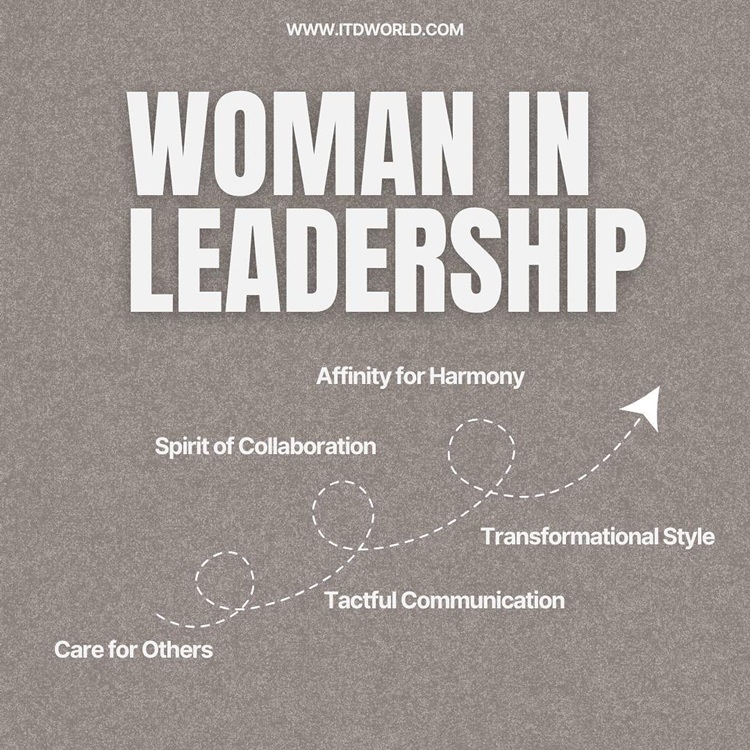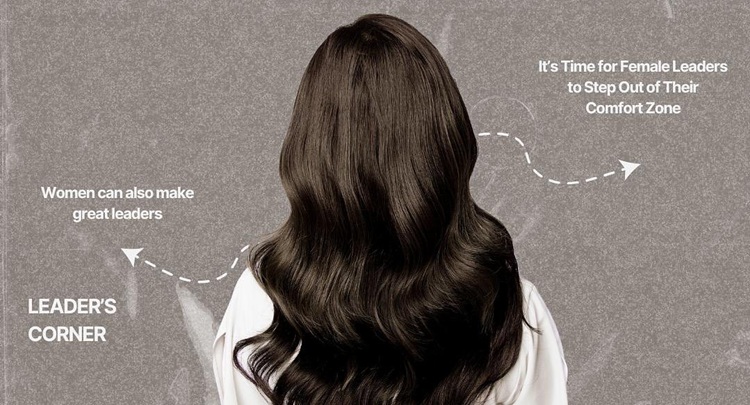Explore the challenges & solutions for promoting women in leadership and laying the ground for a more inclusive workplace.
Within recent decades, the landscape of leadership has been undergoing a profound transformation – as women assert their roles across diverse fields, including business, administration, education, engineering, healthcare, and beyond. Where once social prejudices stifled the recognition of women’s capabilities, we now witness a dynamic shift, driven by female leaders emerging prominently on the global stage.
|
Author: Jonathan M. Pham |
Highlights
- Research suggests that while leadership transcends gender, men and women may exhibit different leadership styles, with the latter emphasizing collaboration and empathy, and the former leaning towards assertiveness and strategic thinking.
- Typically, female leaders are distinguished by a transformational management style, an emphasis on harmony, collaboration, tactful communication, and care for others.
- Promoting women in leadership is crucial for effective institutions and societies – as it brings qualities like collaboration and empathy, leading to improved financial performance, inclusive governance, enhanced well-being, and reduced income inequality.
- Despite progress, women remain underrepresented in leadership due to persistent stereotypes about their suitability for such roles. Additionally, they face numerous challenges, including a persistent income gap, limited employment/ advancement opportunities, and the struggle to maintain work-life balance due to disproportionate domestic responsibilities.
- Promoting female leadership requires a concerted effort to redefine societal norms, showcase their achievements, and engage in ongoing conversations to challenge biases and accelerate cultural transformation.
- To overcome persistent challenges, women leaders must step out of their comfort zones, cultivate confidence, challenge the status quo, and ask for recognition, while organizations must implement systemic reforms to create a more equitable environment.
The Role of Gender in Leadership
Within any organizational setting, leaders serve as the cornerstone for fostering collaboration and driving collective efforts toward shared objectives. Central to effective leadership is the art of influencing individuals across all hierarchical levels – superiors, subordinates, and peers alike – and uniting them around a common vision.
While the essence of leadership transcends gender, research has suggested subtle differences in terms of approach and execution between males and females. Specifically, women in leadership is characterized by traits such as empathy, collaboration, and a penchant for holistic decision-making. Conversely, male leaders are likely to lean toward assertiveness, strategic thinking, and risk-taking.

Understanding these nuances is vital for cultivating inclusive environments that harness the diverse strengths of all genders.
Women in Leadership: What Sets Female Apart From Their Male Peers?
-
Transformational style
Women typically exhibit a proclivity toward transformational leadership – a management style characterized by inspiration, mentorship, and a strong commitment to individual growth. Unlike their male counterparts, female leaders are frequently lauded for their adeptness at motivating teams and investing time/ effort in promoting the development of their people. This is attributed to women’s tendency to be genuinely concerned for others’ growth – as well as their recognition that collective success hinges on a culture of mutual respect and support.
For many female leaders, the essence of management is not only about the attainment of organizational objectives; rather, its main goal is to empower people to realize their full potential. As such, they view their role not only as drivers of corporate success – but also as catalysts for personal and professional evolution.
The emphasis on holistic development and nurturing talent underscores the pivotal role of women leadership in fostering inclusive, thriving workplaces.
-
Affinity for harmony
Female leaders tend to gravitate toward a collaborative and egalitarian organizational culture characterized by a flat hierarchy. They prioritize creating an environment where everyone feels valued and motivated to make meaningful contributions – regardless of tenure or hierarchical standing. Instead of adopting traditional leadership paradigms that emphasize experience/ seniority in decision-making, women are more inclined to embrace a participatory approach that elevates diverse perspectives and fosters a sense of collective ownership.
This preference for a flat organizational structure reflects a broader commitment to harmony and inclusivity within the workplace. Rather than relying solely on hierarchical authority, female leaders realize the importance of building consensus and leveraging collective wisdom.
Research has underscored the significance of such an approach, with statistics indicating that 65% of women, compared to 56% of men, value leadership qualities such as knowledge sharing and building connections within the team/ broader business ecosystem. Their emphasis on relationship-building positions them to excel in navigating complex challenges and driving sustainable growth in times of crisis.
-
Spirit of collaboration
Collaboration is a distinctive trait deeply ingrained in the leadership style of many women. Female leaders are known for consistently championing the ethos of teamwork and cooperation, recognizing that collective effort yields greater results than individual pursuits.
Central to the spirit of collaboration is clarity of roles and responsibilities – defining clear expectations and delineating tasks to avoid duplication of efforts and maximize efficiency. When each member is well aware of their role within the team framework, the risk of redundancy is mitigated – and a culture of accountability and mutual support is fostered.
The women [I’ve worked with] consistently demonstrate passion, enthusiasm and an immense capacity to serve and be served by others. I’ve observed women make bold and wise decisions as leaders while relying on others to be part of their team. The environment is less authoritarian and more cooperative and family-like, but with solid leadership.
Katharine M. Nohr
-
Tactful communication
Female leaders are typically characterized by a more democratic communication style compared to their male counterparts. They foster an atmosphere of collaboration by indirectly communicating expectations and allowing flexibility in achieving goals. This approach enables individuals to leverage their skills and expertise effectively – while promoting autonomy and creativity.
However, while tactful communication may play a role in enhancing employee engagement and productivity, it also presents challenges in situations that require assertiveness. Female leaders may encounter difficulties when decisive action is needed – or when addressing conflicts that necessitate clear and unambiguous communication.
Furthermore, research suggests that woman leaders often downplay their achievements and contributions, which may result in a lack of recognition from others. Overcoming this disparity requires them to proactively build their personal brand by showcasing personal accomplishments and expertise. In doing so, they garner the recognition and respect they deserve, while also inspiring confidence and trust among the team.
-
Care for others
A deep appreciation for relationships is another hallmark quality of female leadership. Women possess a natural inclination toward understanding the motivations and emotions of others, which enables them to facilitate a workplace environment characterized by compassion – and to recognize the diverse needs and strengths of different employee groups.
Thanks to their approachability and willingness to engage with others on a personal level, employees often feel comfortable approaching them with personal requests or sensitive questions, feeling confident in their leader’s discretion. This open-door policy not only strengthens internal relationships – but also lays the foundation for mentorship and professional development opportunities.
Women make great leaders because we take the time to listen instead of reacting right away. We appreciate people and their viewpoints. Whether they are right or wrong, we hear them out and then make our decision. We tend to give people chances that no others do.
Jo Hausman

Read more: Love Leadership – More Than an Abstract Philosophical Idea
The Importance of Women in Leadership
The effective functioning of any institution, whether at the societal or organizational level, hinges upon the equitable participation of women in leadership roles. In the 21st century, the qualities requisite for effective leadership – collaboration, empathy, connectivity, and communication, to name a few – are (coincidentally) feminine in nature.
Empirical evidence has demonstrated that businesses helmed by women often yield superior financial performance. Moreover, female leadership plays a pivotal role in catalyzing transformation, both within the confines of the home and in the broader societal landscape.
According to Womendeliver, organizations and societies reap a multitude of benefits when women occupy leadership roles – namely:
- Inclusive governance: When women are adequately represented in governing bodies, laws, rules, and decisions tend to reflect a diversity of perspectives, fostering inclusivity and equity within society.
- Enhanced well-being: Access to high-level positions affords women greater agency and resources, thereby enabling them to advocate for better education and healthcare provisions for their families, thus improving overall well-being and societal welfare.
- Reduced income inequality: Countries with a higher proportion of women in legislative positions tend to exhibit lower levels of income inequality, as policies and initiatives are more attuned to the needs and realities of diverse segments.
Why Do People Still Distrust Women in Leadership?
Despite their increasing visibility across various sectors, a pervasive underrepresentation of women in leadership roles persists. While notable strides have been made in recent years – with several high-profile female leaders occupying prominent positions in businesses, government agencies, and international organizations, the reality remains that women are not afforded equal opportunities to pursue management roles compared to their male counterparts.
Statistics from sources such as the Huffington Post reveal a glaring gender gap, with only a small fraction of Fortune 500 companies being helmed by female leaders. This stark disparity prompts many of us to question the systemic barriers and ingrained biases that impede women’s professional advancement.
It’s just a myth that one female leader changes society.
Michelle Harrison
One primary reason has to do with the pervasive stereotype that women are inherently ill-suited for leadership roles – specifically, they are typically perceived as lacking the requisite strength, assertiveness, and decisiveness traditionally associated with management. This assumption not only undermines their confidence and aspirations – but also perpetuates a culture of discrimination that limits access to professional opportunities.
As highlighted in a report by the Wilson Center, public perception plays a pivotal role in shaping the trajectory of women’s leadership journeys. Addressing these systemic barriers and dismantling entrenched gender biases is essential for fostering a more inclusive and equitable landscape.
Read more: Resistance to Change in the Workplace – How to Manage & Overcome It

Challenges of Women in Leadership
- Income gap
According to the International Labor Organization (ILO), women are typically paid approximately 20% less than their male counterparts. The economic fallout from recent crises has further exacerbated this disparity. While men’s salaries witnessed a notable uptick amidst the pandemic-induced economic upheaval, women are reported to have been experiencing a precipitous decline in earnings.
It is true that individual factors such as education, experience, and qualifications may contribute to wage differentials in some instances. That being said, the majority of the above-mentioned income gap can be attributed to systemic discrimination and entrenched sexism within the labor market. The undervaluation of women’s contributions in traditionally feminized occupations and industries, coupled with the pervasive phenomenon of the motherhood wage gap – wherein mothers earn substantially less than their childless counterparts – underscore the persistent gender biases and inequities that plague the workforce.
- Lack of equality in employment opportunities
According to a report by Deloitte, women hold only 19.7% of board seats globally. One of the primary barriers to female development lies in the prevalence of rigid career advancement frameworks. In workplaces where progression is governed by traditional hierarchies and “mechanical” career ladders, women are typically faced with systemic barriers that constrain their ability to ascend to leadership roles.
Discriminatory hiring practices and limited access to mentorship/ sponsorship curtail women’s ability to gain the requisite skills and experiences necessary for advancement. On the other hand, the absence of supportive organizational cultures and inclusive policies exacerbates the challenges.
- Advancement barriers
An analysis by McKinsey underscores the persistent underrepresentation of women in senior leadership roles across organizations globally (specifically, women in C-suite positions comprise a mere 21%).
A myriad of factors contribute to the problem, with the intersection of work and family responsibilities posing a significant impediment. Difficulty in juggling work and caregiving obligations forces many to prioritize family commitments over career growth.
- Maintaining work-life balance
Even in families where both spouses work full-time, women disproportionately shoulder the responsibility for housework and childcare. This unequal distribution of domestic labor places women in leadership positions at a distinct disadvantage, as they contend with the competing demands of career and family care.
The dilemma of choosing between attending school performances, engaging in quality time with children, and meeting professional obligations weighs heavily on women, often leading to feelings of guilt, inadequacy, and exhaustion. Over time, the strain of maintaining work-life balance may take a toll on their well-being, productivity, and relationships. Chronic stress and burnout, exacerbated by the relentless juggling of competing priorities, often undermine women’s mental health and erode their sense of fulfillment in both professional and personal spheres.

Promoting Women in Leadership & Letting Them Truly Shine
Over time, there has been a gradual shift in societal perceptions and attitudes related to women in leadership. However, to fully realize and bridge the gender gap, concerted efforts to accelerate cultural transformation are imperative.
Central to this endeavor is redefining societal norms and expectations surrounding the role of leadership. By amplifying diverse narratives and showcasing the achievements/ contributions of woman leaders across various domains, media platforms may contribute to challenging stereotypes, inspiring change, and elevating the visibility of women in management positions.
Moreover, consistent engagement in conversations about women in leadership is essential for effecting lasting change. By fostering open dialogue, promoting awareness, and challenging prevailing biases, society can create an environment conducive to the empowerment and recognition of female leaders.
Read more: Organizational Transformation – An Essential Guide
It’s Time for Female Leaders to Step Out of Their Comfort Zone
Historically, women aspiring to succeed in their careers have navigated environments heavily influenced by male operating styles; as such, they had to contend with societal expectations and workplace norms that hindered advancement. Faced with barriers and biases, they have been compelled to conform to prevailing cultural and organizational dynamics, adapting themselves to fit within existing frameworks while striving to overcome systemic obstacles.
While advances in education and advocacy have eroded public hesitancy towards female leadership, significant challenges persist – which necessitate women to confront and transcend their comfort zones. Central to this journey is cultivating confidence in one’s capabilities and resources, both tangible and intangible, and embracing the courage to challenge the status quo.
Research conducted by Hewlett-Packard has shed light on the pervasive phenomenon of Imposter Syndrome among women – wherein women tend to apply for jobs only when they meet 100% of the qualifications, compared to men who apply when they meet only 60%. This disparity stems from ingrained beliefs and unconscious biases that undermine women’s confidence and self-worth. To counteract this issue, female leaders need to adopt a mindset of self-assurance and resilience, recognizing their inherent value and potential to excel in their endeavors.

Empowering women to transcend their comfort zones requires a concerted effort to challenge limiting beliefs and foster a culture of support and encouragement. Woman leaders must seize opportunities to showcase their skills and expertise, advocate for their worth, and demand the respect and recognition they rightfully deserve in the workplace.
Moreover, promoting gender equality in the workplace necessitates systemic reforms and practices that level the playing field and dismantle barriers to individual advancement. By championing diversity, fostering inclusive leadership, and promoting equitable opportunities for all, organizations may cultivate environments where female leaders can thrive and lead with authenticity, confidence, and conviction.
In contrast to men, who tend to be career-centric and want to maximize their financial return from work, women view work more holistically, as a component of their overall life plan. Therefore, they’re more likely to approach their careers in a self-reflective way and value factors such as meaning, purpose, connection with co-workers and work-life integration.
Emily He
Other resources you might be interested in:
- Executive Presence: A Complete Guide to Mastery
- High-performance Culture: A Blueprint for Driving Excellence
- Cross-Cultural Communication: Guide for Leaders & Coaches
- Building High-performing Teams: How to Power Up Your People
Note: The content on this article is for informational purposes only and does not constitute professional advice. ITD World is not responsible for any actions taken based on the information provided here.

